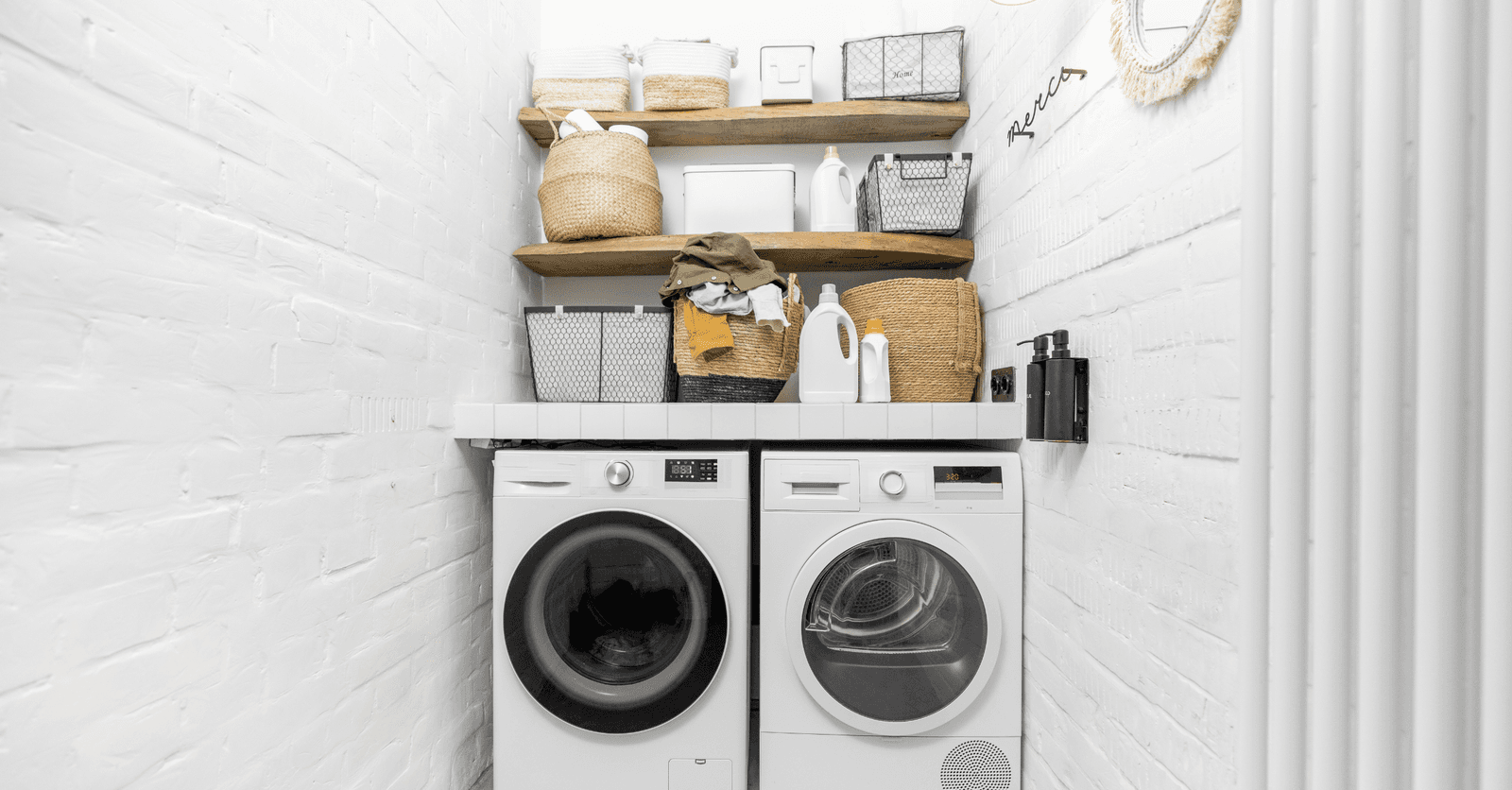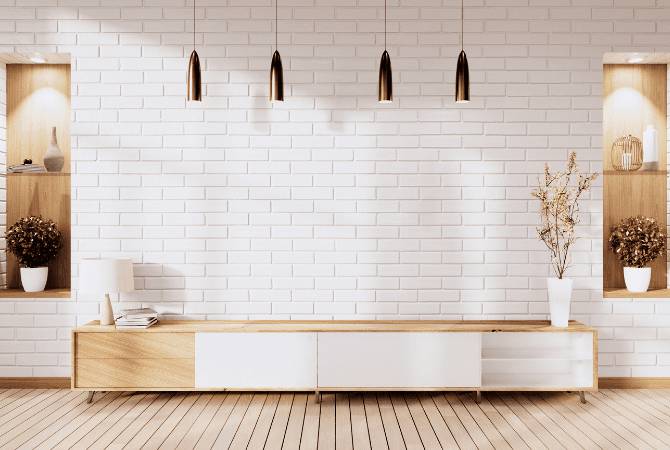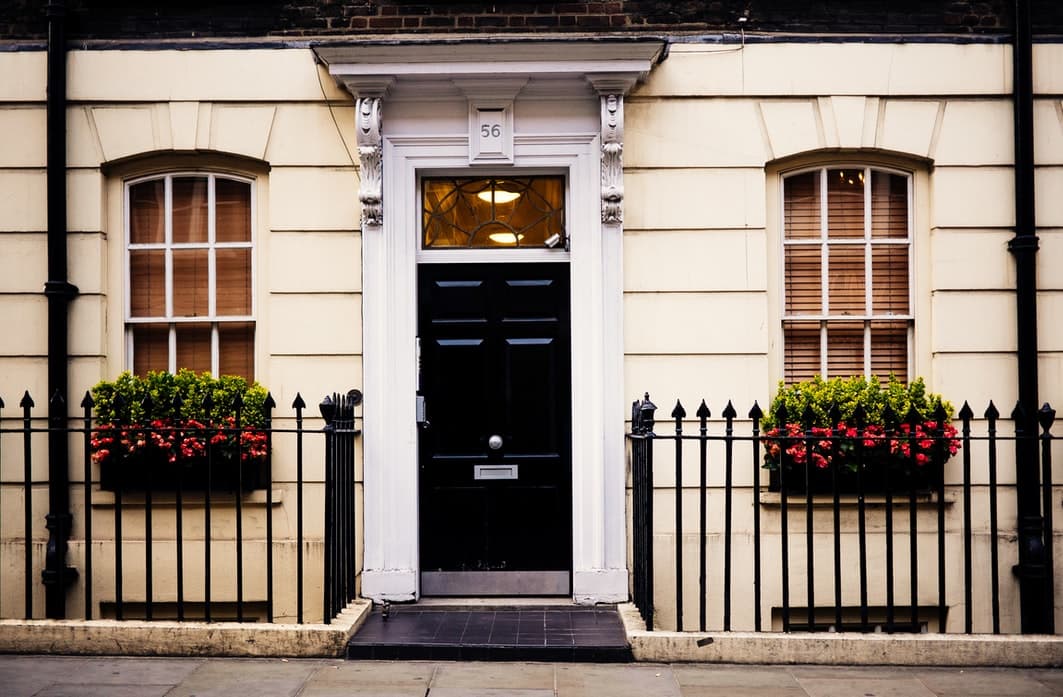
Global warming, deforestation, acid rain, plastic microbeads, oil spills, blue-green algae, holes in the ozone layer, endangered species, ecosystem destruction, heat islands, public health issues… Clearly, the 21st century sees no shortage of environmental problems.
10 Eco-Friendly Home Renovation Tips
1. Overcome preconceived notions

Source: Canva
According to RénoVert, there are 5 myths that limit the way we perceive green home renovations, which actually have a great many possibilities.
Green renovation projects are complex and require specialized services, like geothermal heating, greywater collection, etc. In fact, there are several simple ways to make your renovation project “greener.” Simply opt for zero-VOC paint, put in more energy-efficient windows, or choose low-consumption water faucets.
Green products are subpar to standard products in terms of quality and durability. In fact, eco-friendly products are equal to, superior even to traditional, “mainstream” products.
Green products are much more expensive than standard products. To sum it up, home renovation projects generate two types of costs: labour and materials. You can’t rely on the price of household products, like soap and others, for comparison since it’s two completely different markets. Whether it’s a green project or not, the cost of labour remains the same. In terms of green materials, their costs are often similar to that of standard products. Some eco-friendly products are 10 to 15% more expensive, however, this difference in costs is often recouped by energy savings and value added to your property.
Home renovations don’t have major repercussions on the environment, and there’s no need to undertake a green project. According to the Quebec Association of Home Builders, the construction industry represents 20% of the primary energy consumption. The industry is responsible for 20 to 25% of the waste found in landfills, and 5 to 12% of the water consumption. Although rather small in terms of percentage, these numbers are especially high in terms of damage caused to the environment, especially if you’re looking to curtail environmental impacts by using known green solutions.
Wood is wood! In fact, there are numerous varieties of wood. Make sure that the trees have been responsibly harvested by relying on their certification. You can also use bamboo. It’s a type of grass that reaches maturity in as little as 7 years and grows wherever without fertilizers, and also releases more than 35% of the oxygen back into the air.
2. Live by the 3Rs: reduce, reuse, and recycle
Have you gotten rid of your preconceived notions yet? Although going green affects renovation costs and materials available, sustainable development is, first and foremost, an attitude to have regarding your consumption habits. The concept of the 3Rs consists of three repeated actions, just like you would a well-being mantra: reduce, reuse, and recycle.
Reduce, since the best environmental waste is the one that wasn’t produced in the first place. This action requires one to think about consumer habits and choices by targeting non-polluting and reusable products. When it comes to renovating, ask yourself if you can retain certain items instead of refurbishing everything. In some cases, upgrading allows you to save in other ways, like for example, water- or energy-wise. The most important thing is to consider all possibilities prior to green-lighting your home renovation project.
Reuse, since one man’s trash is another man’s treasure. This action consists of reusing already-consumed products and giving new life to said items. One can also think of the third way to save: organize a garage sale, salvage thrift shop clothing, use recycled paint, make new things with recovered ones, as well as consume foods that are a few days past their expiration date. When it comes to renovating, consider reusing by seeking out companies that recover and resale materials (in French only).
Recycle, since waste is a resource. This action consists of taking into account that our waste can be turned into resources giving new life to items while still reducing the use of new matters. What are you going to do with your renovation waste, leftover paint, etc.?
3. Use green renovation financial assistance
Even if you’re considering the 3Rs in your daily consumption habits, renovating your home requires you to have more than good intentions. Given that society as a whole benefit from sustainable development, as such, a series of financial assistance programs are available for your green renovations.
On a municipal level, some cities offer financial assistance in addition to existing grants. In Montréal, there are numerous programs linked to acquiring a property, renovation programs, foundation stabilization, urban family housing, adapted housing for autonomous seniors, adapted housing for persons with disabilities, and social and community housing.
In Québec City, an assistance program is available in various fields, like environment and residential construction. In Laval, numerous programs are available related to rain barrels, household compost bins, low-flush toilets, and work being done in older neighbourhoods. There are similar programs offered in other cities in Quebec and in more rural areas. The SHQ (Société d'habitation du Québec) offers many assistance programs.
To that, there are energy efficiency programs (Éconologis, ENERGY STAR), for energy-efficient appliances (Recyc-Québec), also offered by financial institutions.
To know more about the available financial assistance programs for your green renovations:
Various Green Home Renovation Credits and Grants (in French only)
4. Draw inspiration from large-scale green renovation projects

Source: Canva
Educating yourself about large-scale green projects is very inspiring as these structures embrace new technologies, contribute to an environmental purpose, and help you understand your role in undertaking green renovations.
In Montréal’s Quartier des spectacles, la Maison du développement durable (Center for sustainable development) is the first LEED Platinum New Construction-certified building in Quebec. This 5-storey building was built after nearly 10 years of hard labour, willpower, and the mobilization of dedicated partners who continue to combine visions, ideas, financing, and networking.
With the goal of building a future without having to mortgage it, this building serves as a reference model for those interested in protecting the environment in terms of construction. So why not head straight to it? Group guided tours are organized, on top of having self-guided building interpretation tours.
In the Middle East, more specifically in Abu Dhabi, the United Arab Emirates’ capital, there’s the planned Masdar City, which is currently being built. This ecological model city is 6 km2 of surface area, and plans on welcoming 52,000 inhabitants who wish to adopt a guided lifestyle by renewable energies, a low-carbon transport system, and a zero-waste strategy.
All the buildings are fitted with solar cells to collect solar energy and mashrabiya or plastic façade films to help fight against extreme heat. During the day, this desert city is cooled by a wind tower erected in the city’s centre, which sucks in the warm wind through its peak and releases cold air through its base via a mist system.
The building meets all environmental excellence criteria: temperature regulation due to a façade that avoids direct sunlight, restricted water consumption, carbon emissions reduced by a third, etc., as stated by the French newspaper Le Monde.
According to The New York Times, one should take a look at the European side of things, more precisely German and Dutch architectural projects. From the 1970s green projects that used solar panels and recycled materials, there’s a new generation of architects who developed the definition of sustainable design. Buildings in the United States use three times more energy than their German counterparts.
5. Use the resources available to you
While the Center for sustainable development and “green” German and Dutch architecture projects are prototypes that serve to make headway on small-scale, eco-friendly renovations, a ton of resources are available.
The LEED for Homes rating system is an internationally recognized symbol of excellence. Ecohome, in addition to being the most experienced service provider in Canada, offers bilingual evaluation services.
6. Hire a green architect
Certain renovation projects require the expertise of an architect. Incorporating the architecture of one's home into its environment is another way to make one's home more ecological. L'Actualité magazine interviewed a number of Quebec architects (in French only) who have shown their commitment to sustainable development.
What are the worst mistakes one can make when it comes to architecture?
"You have to avoid magazine trends and architecture, meaning architecture that lacks context and whose sole purpose is to appear in a publication as a one-off. It's a short-lived consumable architecture that’ll look good on paper... but ridiculous in real life. Also, as with any other art form, you must avoid copying and pasting and instead favour real coherent compositions," said architects Loukas Yiacouvakis and Marie-Claude Hamelin of YH2.
What are the biggest misconceptions about architecture?
"That it's expensive. The initial cost is understandably higher than if you were to buy a series of blueprints for $1,000 in a home catalogue. But the latter won't consider the client's needs and daily habits! Architecture is closely linked to land, topography, the sun's daily arc, and wind patterns. It seems rather strange to me that a house designed for a specific location, that its very same plans would be used elsewhere without considering the characteristics of the new environment," explained architect Gabriel Rousseau.
7. Use eco-materials

Source: Canva
According to Ecohome, every day, we ingest 1 kg of food, drink 3 kg of liquids, and breathe up to 17 kg of air, which renders us vulnerable to inhaling pollutants. Forever a figure within our environment, pollutants appear to be to cause of increased cases of asthma, leukemia, brain tumours, and different cancers over the past 20 years. The amount for certain diseases has doubled, tripled in some cases. The 2013 study, Écotoxicochimie des hydrocarbures (hydrocarbon ecotoxicochemistry) stipulates that the world’s chemical production went from 1 million tones to over 400 million tones between 1930 and 2000. Choosing eco-materials is part of the answer to avoid being exposed to these pollutants.
According to La Presse, it’s best to use the following materials:
Wood fibre panels: Made with wood chips, it’s a material that's perfect to cut down thermal bridges by spanning the walls’ half-timbering. It’s an alternative to polystyrene panels, which are petrochemical-based, non-recyclable, and have poor humidity diffusion. Find out more about Excel Wood;
Glass-plastic slabs: It's a material made of grocery store plastic bags and glass from different waste collections, scattered with porcelain debris, which is ultimately shaped into slabs and pavers;
Recycled plastic boards: This is a material made of discarded containers of shampoo, laundry, juice, milk, yogurt, etc found in recycle bins. It’s especially sustainable and requires very little maintenance, and makes great construction materials to build a patio;
Wood wool or textile fibres: These are made of wool insulation mat wood chips that trap carbon and don't contaminate the frame of the house as spray polyurethane does. There are other types of mats made from hemp and flax textile fibres, cellulose batting, and sheep's wool that could replace glass wool and rock wool.
8. Hemp materials—best not smoked!
The hemp plant, whose tough fibre is already used in rope-making, is also used as a construction material.
According to an article published in La Presse, the technique used by Anthony Néron of Art du Chanvre (“hemp art”) and Gabriel Gauthier of ArtCan consists of insulating walls and ceilings with hemp before coating them in a lime finish. Nowadays, they both have a hundred houses to their credit, renovated and built entirely with hemp. Although hemp doesn't stand out for its insulating value, with an R25 value when R24 is required by the National Building Code of Canada, it's still preferred for its thermal mass.
This material is designed to store temperature, hot or cold, and then radiate it. It also helps manage humidity. "While the sole purpose of the ordinary wall is as a barrier, hemp, on the other hand, will further regulate temperatures and manage humidity. Year-round, the house is very consistent. It'll stay at 21 degrees Celsius without being energy hungry," commented Anthony Néron.
According to another article in La Presse, a Montréal homeowner turned to Anthony Néron when renovating their dwelling. Néron suggested hemp blocks be used instead of traditional insulation.
Handcrafted, these blocks are a clean and environmentally friendly method that not only lasts but also regulates the temperature year-round in the house. Once the insulation was complete, Néron covered the walls without using drywall. "It's a lime and sand finish, trowelled on," he explained.
As a result, the surface isn’t as even as with drywall but has more texture. "It's kind of like looking at a cloud. It's nuanced, there's depth…," the craftsman further explained.
"They're handcrafted walls, they're all handmade. These walls aren't perfect, and that's the beauty of it," asserted the delighted homeowner.
9. Conserve water!

Source: Canva
Some "climate change skeptics" might try to convince you that with the ice caps melting off at the far corners of the globe, humanity will have access to more drinking water. Nothing could be further from the truth, since the ocean currents regulating water temperature will slow down to the point of ceasing their cycle around the globe, transforming the oceans into a mass of stagnant water. Even if Quebec and Canada have a vast network of lakes and rivers, it's still imperative to avoid wasting this vital human resource.
According to the Environment Quality Act, it’s mandatory to treat wastewater prior to “releasing” it into the natural environment since these waters are full of microorganisms, carbon, nitrogen, and phosphorous. These elements, released unmonitored, disrupt ecosystems and pollute the environment, not to mention representing a potential health hazard.
In urban areas, this is done through the municipal sewer system: all collected water is sent to a treatment plant, known as the "sewage treatment plant." However, if you live in rural areas or small communities, it's likely that there is no municipal service. Therefore, a specific installation must be put in place on your property to treat and dispose of wastewater.
Each person residing in Quebec consumes roughly 380 litres of drinking water per day, and over one-third of that goes directly into the toilet. Therefore, one of the most effective ways to reduce household water consumption is to replace your high-volume toilet with a very low-flow model.
By doing so, you'll save energy costs associated with water heating, pumping, and treatment done at water treatment plants. For example, 20% water savings can mean $2 billion in savings over 20 years.
10. Consider the “green” roof
You probably already heard the term "heat island." According to Ecohome, it's caused by a large number of asphalt and concrete urban infrastructures: roads, parking lots, and buildings and roofs made of waterproof materials.
Having a low reflective functionality, the previously-mentioned materials store a lot of energy during the day and then release it back in the form of heat. Thus, temperatures in these zones are much higher, by up to 12 degrees. This phenomenon causes public health problems and increased energy consumption.
With a green roof, you can cover areas that contribute to heat islands with greenery, which will effectively mitigate the building's temperature, thus acting as a buffer, both cooling in summer and insulating in winter.
Besides controlling heat islands, green roofs limit rainwater runoff and curb sewer overflow. With its plants and substrate of varying thickness, it traps volatile compounds, expands urban crop growth areas, and provides new habitats for birds, butterflies, and bees.
So, why not add a rooftop terrace in the heart of that blue sky? Isn't it the perfect place to share a meal with friends, surrounded by rooftop plants and neighbouring buildings?
Want to know more about eco-friendly renovations? Check out our Green Renovation Guide.
Get 3 quotes for your green renovation project
RenoQuotes.com can help you get quotes for your green renovation project. By submitting your project, we’ll put you in contact with top-rated contractors. Fill in the form on the homepage (it only takes a few minutes), and you will get estimates from trusted professionals.
Dial 1-844 828-1588 to speak with one of our customer service representatives.
Looking for something else?
Related articles
The latest industry news, interviews, technologies, and resources.

Léa Plourde-Archer
•07 Nov 2023
Ceramics look beautiful in almost any home, whether used as a material for the kitchen backsplash or as a beautiful mosaic accent piece on a wall. This material is versatile, low-maintenance, sturdy and with an excellent lifespan if looked after correctly. Another place a tile floor is commonly found is in the bathroom. If you already have one installed, then you’re one step ahead of us.

Editorial Team
•07 Nov 2023
A laundry room is a major convenience, allowing for clean clothes at any given moment. Usually separated from the rest of the home, this room can be treated as an afterthought, a place to dump dirty things and forget about them. However, there are plenty of ways to set up a laundry room properly to foster organization and efficiency.

Editorial Team
•07 Nov 2023
Who doesn’t love a cool summer breeze on a sizzling summer day? Being able to open and close your windows freely is one of the perks of having them. But of course, the mechanisms for opening and closing windows break occasionally. Window cranks, also known as casement operators, have a spline that slowly wears down from continued use and over time, and will need to be repaired or replaced.

Cynthia Pigeon
•07 Nov 2023
As far as interior design goes, there are two schools of thought when it comes to white walls. Some love the way their seemingly timeless shade enhances and brightens a room, while others find them rather boring, uninviting even. A clever way to reconcile these opposites is to add texture. Rather than simply painting your walls white, opt for a cladding that'll add volume, patterns, and elegance to any space within your home, like a white brick.

Editorial Team
•07 Nov 2023
Because of their popularity, hinged, sliding or hung windows rarely need presentation. But what about the fanlight?